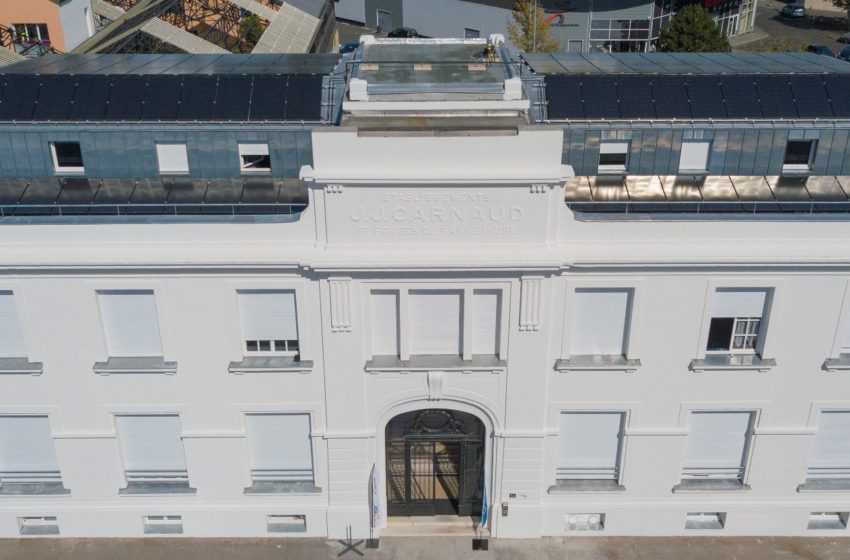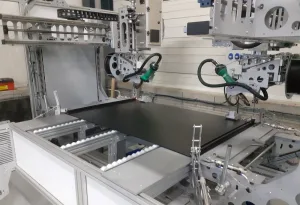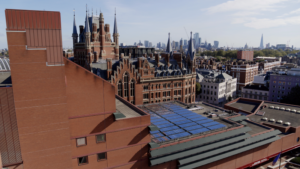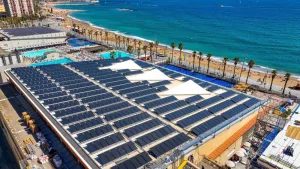PVT provides 3 times more energy than same-size PV system
August 30, 2021
Historic building stock and solar energy are not mutually exclusive, as illustrated by La Marseillaise in Nantes, western France. A block of 39 student flats, this 1930s building has no gas or oil boilers but PV-thermal collectors and photovoltaic panels for the on-site production of solar heat and electricity. Hot water demand is met solely by the rooftop PVT system and a heat pump, while space heating is provided by a decentralised solution that relies on electric heaters.
Photo: Pouget Consultants / Thomas Meurville
The designers of the low-emission hot water system have been very pleased with its performance. In 2020, the PVT installation met 66 % of the building’s annual hot water demand of 49,386 kWh (see the chart below). The system was designed and installed by two French companies, PV-thermal specialist Dualsun and heat pump supplier Heliopac.
Monitoring data shows that in its first full year of operation, the electric heater backup of the hot water system covered only 8 % of demand. This was less than what simulations had predicted in the planning phase, although a problem with the PVT collectors in May 2020 meant the heating element temporarily supplied nearly all the hot water during that period.
“Our aim with this innovative energy system is to demonstrate that we can do entirely without gas or oil boilers in such a large residential building. Compared to the gas-fired heating system that provided occupants with hot water prior to the retrofit, the intelligent use of the waste heat produced on the underside of the PV modules has led to a 90 % reduction in CO2 emissions,” explained Alain Raguideau, President of French project developer Galeo and initiator of the retrofit project.

Energy balance of the La Marseillaise hot water system in 2020
Source: Heliopac / Chart: IntegraTE
The 75 m2 PV-thermal installation on the roof is a hybrid system, with commonly available PV elements on top and polymer heat absorbers below the panels. The absorbers make use of the waste heat from electricity generation to run a brine-to-water heat pump. Two 1,000-litre storage tanks then supply the 39 La Marseillaise flats with hot water at an average temperature of 55 °C all year round. A 9 kW as well as a 6 kW electric heater integrated into these tanks act as backup units.

Throughout the year, the PVT field produces three times more energy in the form of heat and electricity than a same-size PV system.
Source: Heliopac / Illustration: IntegraTE
| Total living space |
1,000 m2 |
| No. of flats |
39 |
| PVT surface area |
600 m2 |
| Annual energy demand for hot water production (incl. pipe heat losses) |
49,386 kWh |
| PV-thermal capacity (of 40 elements in all) |
11.2 kWel / |
| Supplier PVT elements |
Dualsun, France |
| Heat pump capacity |
8 kW |
| Heat pump COP (brine at 0 °C; hot water at 35 °C) |
3.85 |
| Supplier heat pump |
Heliopac, France |
Factsheet on low-emission hot water system at La Marseillaise
Source: Dualsun/Heliopac

Solar roofing all around: The solar energy system spans the entire roof of the multi-family building, making it impossible to distinguish the PV from the PVT elements.
Photo: Pouget Consultants / Thomas Meurville
Organisations mentioned in this article:


